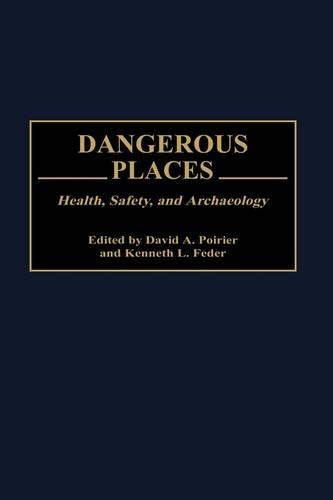
Dangerous Places: Health, Safety, and Archaeology
(Hardback)
Available Formats
Publishing Details
Dangerous Places: Health, Safety, and Archaeology
By (Author) David A. Poirier
Edited by Kenneth L. Feder
Bloomsbury Publishing PLC
Praeger Publishers Inc
30th October 2000
United States
Classifications
Tertiary Education
Non Fiction
Health and safety in the workplace
363.1199301
Physical Properties
Hardback
264
Description
Archaeological sites often seem to be idyllic, even romantic, places where scientists recover and analyze fascinating data that can inform us of past times and the past lives of our recent historical and ancient prehistoric human forebears. Too often, however, unrecognized dangers lie within: bacterial and viral infections hidden in the soil, concealed in the animals that roam through our sites, or even lying in wait in organic remains we excavate; toxic substances produced by the historical technologies we study and that continue to poison the sites where people once worked; the bodies of people who died of historical scourges that once afflicted humanity and whose excavated mortal remains may still harbor the pathogens that killed them, dormant and lying in wait for an unsuspecting and largely no-longer immune modern population. It's enough to make an archaeologist swear off fieldwork! The truth is, however, that archaeologists need to be alerted to the dangers present in fieldwork and advised of the reasonable precautions that should be taken to insure the safest possible working environment. Dangerous Places brings together an enormous body of information regarding the threats that archaeologists face every day, and the best ways of behaving proactively to avoid or mitigate these threats.
Reviews
.,."highly informative and a "must read" for Project Managers who put personnel into the field, and for the field crew who may encounter hazardous situations."-Northeast Historical Archaeology
.,."should be required reading for field crews and their supervisors to emphasize the risks of digging in areas of human use and occupancy and to provide guidance for ensuring health and safety in specific environments."-Risk
...highly informative and a "must read" for Project Managers who put personnel into the field, and for the field crew who may encounter hazardous situations.-Northeast Historical Archaeology
...should be required reading for field crews and their supervisors to emphasize the risks of digging in areas of human use and occupancy and to provide guidance for ensuring health and safety in specific environments.-Risk
Dangerous Places brings together an enormous body of information regarding the threats that archaeologists face every day, and the best ways of behaving proactively to avoid or mitigate these threats.-International Council on Monuments and Sites, U.S. Committee
Dangerous Places is an excellent health and safety reference manual for all archaeologists who are actively engaged in fieldwork....From start to finish, the book is well-written, straightforward, and presents information necessary for project managers, field school directors, and field archaeologists at all levels to protect themselves (and those under their supervision) from taking unecessary health risks while pursuing fieldwork. I recommend this volume without reservation.-Journal of Middle Atlantic Archaeology
..."highly informative and a "must read" for Project Managers who put personnel into the field, and for the field crew who may encounter hazardous situations."-Northeast Historical Archaeology
..."should be required reading for field crews and their supervisors to emphasize the risks of digging in areas of human use and occupancy and to provide guidance for ensuring health and safety in specific environments."-Risk
"Dangerous Places brings together an enormous body of information regarding the threats that archaeologists face every day, and the best ways of behaving proactively to avoid or mitigate these threats."-International Council on Monuments and Sites, U.S. Committee
"Dangerous Places is an excellent health and safety reference manual for all archaeologists who are actively engaged in fieldwork....From start to finish, the book is well-written, straightforward, and presents information necessary for project managers, field school directors, and field archaeologists at all levels to protect themselves (and those under their supervision) from taking unecessary health risks while pursuing fieldwork. I recommend this volume without reservation."-Journal of Middle Atlantic Archaeology
Author Bio
DAVID A. POIRIER is Staff Archaeologist, Connecticut Historical Commission./e KENNETH L. FEDER is Professor of Anthropology, Central Connecticut State University./e
